11 Mistakes You May Be Making With Canned Corned Beef

With things like canned cocktail wieners, canned haggis, and yes, even canned bread, the list of bizarre foods people have stuffed into sealed aluminum packaging is nothing short of astounding (and just a bit questionable, if we're being honest). Whether because of their high sodium content, strange ingredients, or simple ick factor, these foods usually don't make it into our pantries, let alone onto our dinner plates.
But not all strangely canned foods are created equal. Take canned corned beef, for example. Yes, it packs a sodium punch, and sure, it might not win any beauty contests, but we believe this often-overlooked canned delight deserves a second chance, if only because most issues come down to incorrect storage and preparation. To address these concerns, we've put together a list of 11 common mistakes associated with canned corned beef. By the end of this article, we're confident you'll see canned corned beef in a new light — or at the very least consider giving it another shot.
Read more: The 14 Absolute Worst Mistakes You're Making With Meatloaf
Keeping It For Too Long
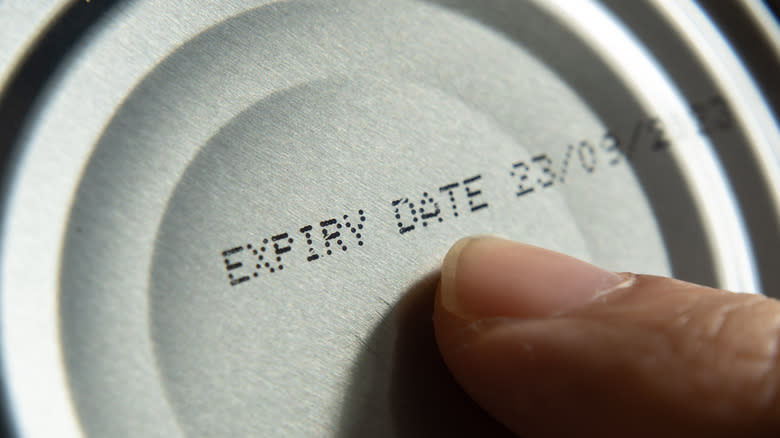
Canned corned beef, often stashed away in the back of the pantry for apocalypse-type scenarios, surprisingly comes with a best-by date. Typically lasting three to five years, per Still Tasty, this window denotes the peak quality of the corned beef. Beyond this period, the texture, flavor, and appearance may decline, but it's generally considered safe to eat, according to the U.S. Department of Agriculture (USDA).
Now, don't take this as permission to consume canned corned beef from decades past. Per the USDA's guidelines, canned foods with an unusual odor, flavor, appearance, or mold, should be disposed of immediately. Additionally, cans showing signs of leakage, rusting, bulging, or severe dents are likely spoiled and should be discarded. To make things simple, only undamaged cans that have been properly stored should be consumed past the best-by date. Once opened, refrigerate any leftover corned beef promptly. It can be safely stored for three to four days in a food-safe container, ensuring it's covered for optimal freshness (via USDA).
Failing To Soak It

Even if you're not well-versed in the world of canned corned beef, it's no shocker that it tends to be quite salty. In fact, a ? cup serving of the Libby's brand of canned corned beef packs a whopping 490 milligrams of sodium, equivalent to about 20% of your daily recommended intake. Thankfully, you don't have to resort to downing cups of water to tackle this sodium-packed treat. Instead, you can use a technique borrowed from fresh corned beef recipes. Just as home cooks should rinse or soak fresh corned beef before boiling, so too should they soak the canned version. Soaking helps remove some of the salt used for curing the meat, thereby reducing the sodium content and preventing an overly salty meal.
To put this tip into action, transfer the canned meat to a pot and cover it with cold water. Mash the beef with a fork to ensure that the water rinses away sodium from all parts of the meat. Boil the water, then remove it from the stove. Let it sit for five minutes before dumping the water and repeating the process twice. Once you've adequately soaked the meat, let it dry out before cooking for best results. Keep in mind that this won't eliminate all of the sodium, but it will certainly make your dinner more palatable.
Forgetting To Render Off The Fat

Fans of bacon, pork belly, and duck are likely familiar with the process of rendering fat while cooking their favorite dishes. This method involves slowly heating the meat to melt and extract its fat, resulting in reduced excess fat and an enhanced flavor and texture. While you may be all in for rendering fat in classics like old-fashioned beef stew and duck poutine, the idea of rendering fat from canned food, especially canned corned beef, might sound a bit strange.
We won't argue with you on that, but we assure you it's possible. Here's how: Start by boiling the can of corned beef in a pot. After a few minutes, take the can off the heat and carefully open it to avoid burns. Once open, you'll notice a layer of liquefied fat on the meat's surface. Scoop or pour this fat into a glass jar or aluminum can, allowing it to cool before disposal. As for the corned beef, simply take it out of the packaging and cook it as you normally would. Remember, this technique won't eliminate all of the fat, but it will significantly reduce it, making your canned corned beef at least a bit healthier.
Heating It Too Quickly
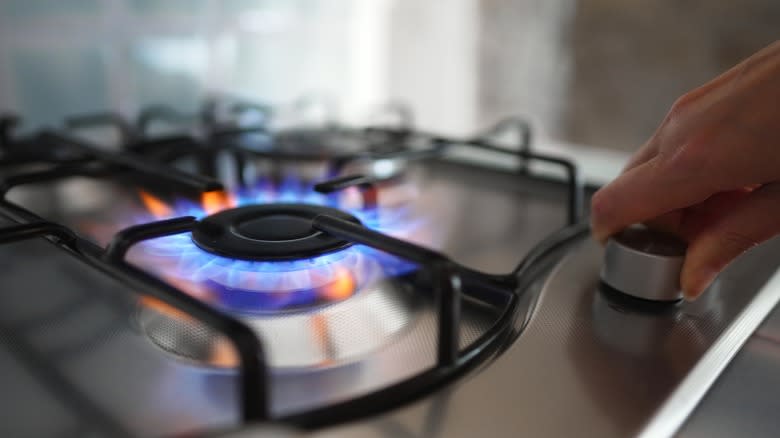
No one would blame you for ripping open a can of corned beef, dumping it in a pan, and calling it a day. After all, when dealing with canned corned beef, you're not necessarily aiming for Michelin-star culinary feats. And it's true, working with canned corned beef can be fairly easy. Still, there are some cooking instructions to keep in mind to ensure the tastiest meal possible.
For starters, check that the corned beef is at room temperature. If it's been comfortably resting in your kitchen pantry, you're good to go. However, if it's emerging from the depths of your basement or fridge, let it warm up for more even cooking later on. Next, ensure your pan is preheated over medium heat. While the urge to crank up the heat for faster results might be there, high heat can lead to burnt or stuck meat, especially if you're using a cast-iron skillet. Lastly, make sure the meat is evenly spread in a ?-inch layer in the pan. This guarantees uniform heat distribution and even cooking, resulting in a final product that's crisped to perfection.
Rushing The Cooking Time
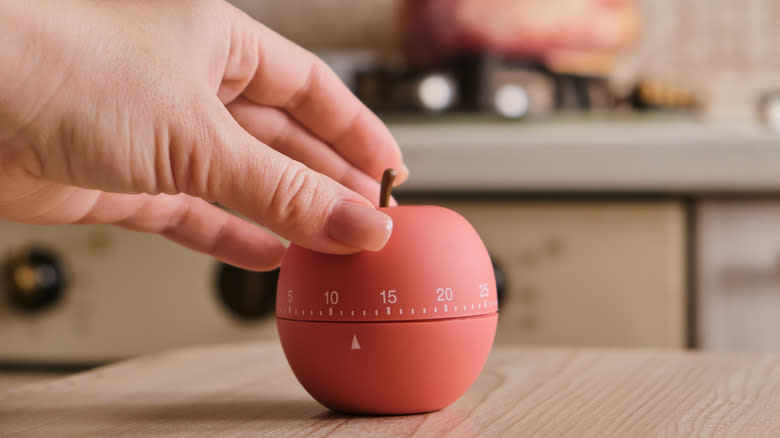
Just as we recommend using medium heat for cooking canned corned beef, being patient with the cooking time is equally important. While you might think a quick stint in the pan is all canned corned beef needs, the reality is that it can take anywhere from six to 25 minutes to achieve that perfect crispy texture you're after.
If you find this time range broad, you're absolutely correct. The cooking times for canned corned beef hinge on various factors, including the type of pan, stove temperature, and the quantity of corned beef being prepared. For instance, cast-iron and copper pans generally cook more slowly than non-stick ones. Additionally, a smaller portion of corned beef will be ready faster than a larger quantity due to increased contact with the pan. It's also worth noting that personal preferences play a role in cooking times. Those who prefer a crispier finish may need to wait a bit longer for their corned beef to reach this goal.
Using The Wrong Oil

Whether you swear by classic olive oil or prefer the richness of avocado oil, the choice of cooking oil might not have crossed your mind lately. While sticking to a favorite oil is perfectly fine for everyday cooking, certain dishes call for a closer look at your selection. Indeed, overlooking this detail could lead to a kitchen mishap before your ingredients even hit the pan.
The important thing to take notice of is the smoke point of each oil. As the name suggests, a smoke point is the temperature at which a specific oil begins to burn or smoke. It's essential to choose an oil with a relatively high smoke point when cooking canned corned beef, as this will help you achieve a crispy texture without burning. With smoke points ranging from 400 F to 450 F, vegetable or canola oil are ideal. With all of that said, it's important to note that canned corned beef doesn't necessarily require additional oil for cooking. It's pretty fat-laden as it is, and these naturally occurring lipids provide plenty of flavor and even heat distribution.
Cooking It In The Wrong Pan
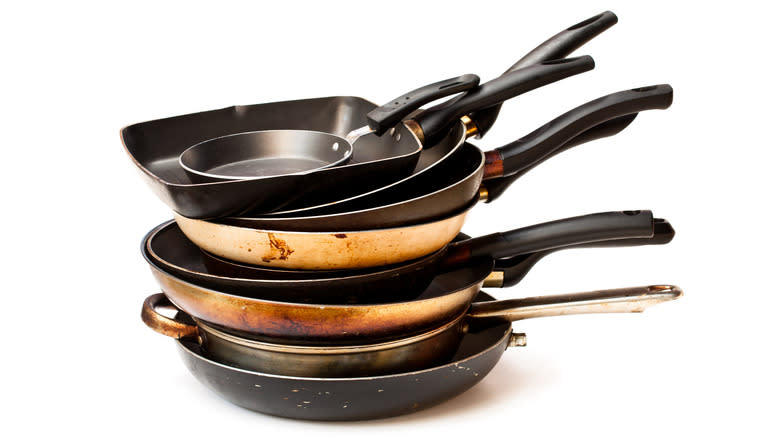
If you've ever found yourself elbows deep in soapy water, cursing the day you decided to use a stainless steel pan, it might help to know that it's not you, it's the pan. Breakup clichés aside, stainless steel pans aren't all bad. In fact, they handle sauces and acidic ingredients with ease. They're easy to deglaze and won't react to tomatoes or citrus, making them the perfect choice for things like béchamel or spaghetti Bolognese.
So, while stainless steel pans are handy for some things, they're less than ideal when it comes to preparing protein-rich foods like eggs or canned corned beef. While stainless steel's surface may look smooth, it contains tiny pores. As the meat heats up, the pores shrink and grab onto the food, forming a stubborn bond that even heavy scrubbers struggle to break. Translation? An annoying pile of dishes, and a lot of wasted meat stuck to the pan. To dodge this kitchen nightmare, go for a trusty cast-iron skillet or, if that's not in your arsenal, grab a non-stick pan. Your post-meal cleanup (and your dinner plate) will thank you!
Not Experimenting With Cooking Methods

Thanks to the popularity of corned beef hash, most people prepare this meaty ingredient by stir-frying it in a pan. There's nothing wrong with that, but it's far from the only path toward crispy, mouthwatering canned corned beef goodness. One alternative is preparing it in the oven. Simply spread the corned beef crumbles on a metal baking sheet and bake at 325 F for 15 to 20 minutes or until you achieve the desired texture.
The oven is great, but the best way to prepare corned beef (in our humble opinion) is by tossing it into an air fryer. We love this method because it's speedy, easy to clean, and nearly foolproof. To take advantage of it, start by lining the air fryer tray with aluminum foil. Break up the corned beef block into crumbles and evenly distribute them in the basket. Set the temperature to 400 F and cook for approximately seven minutes. Stir the meat, then set the timer for another seven minutes. Finish with a final round of stirring and cooking for seven minutes before digging into perfectly prepared corned beef.
Serving It Plain
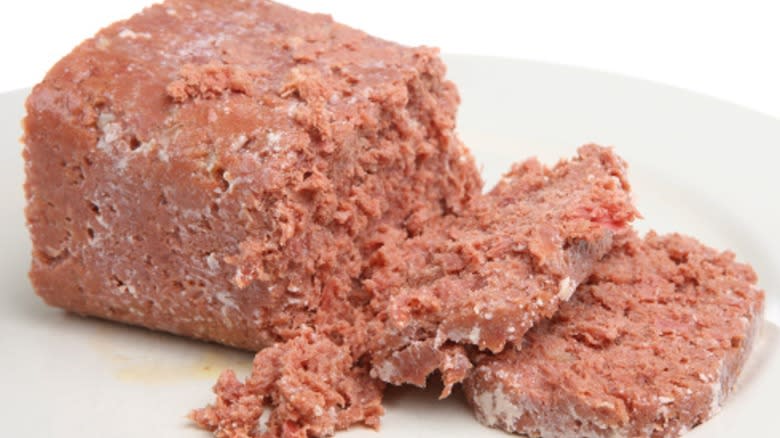
Let's not sugarcoat it — canned corned beef isn't exactly the belle of the ball. Rather, it resembles a mushy, pinkish block that could easily be mistaken for pet food. Taste-wise, it's not exactly a culinary sensation, either. Unlike its fresh counterpart, which gets a flavorful blend of black pepper, coriander, and allspice, canned corned beef usually only gets a dash of salt and sugar. The salt serves as a preservative, doubling up to enhance the beefy taste, while the sugar helps balance out the strong salty notes. The result? A rather bland overall effect.
Considering the less-than-impressive look and taste of canned corned beef, serving it straight up is a no-no. Luckily, you don't need a chef's diploma to elevate it. Just throw in some sautéed garlic or onions to wake up those taste buds. Then, get creative with herbs like flat-leaf parsley, thyme, or oregano. Parsley brings a subtle earthiness, thyme adds minty and citrusy vibes, and oregano brings bold and slightly bitter flavors to the table.
Missing Out On Making Your Own Hash
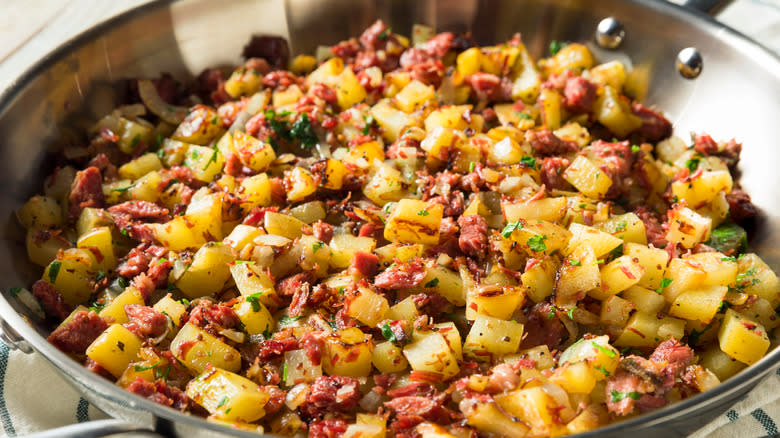
Canned corned beef can be intimidating for the uninitiated. Not only do you have to grapple with the peculiarly shaped can, but once you've deciphered the art of using the key to break the seal, you're left facing a meaty cube with no apparent hints on how to prepare it. It's basically like receiving a block of marble and a chisel without a clue about sculpting.
While we can't magically transform you into a canned corned beef expert, we can kickstart your journey with a fantastic recipe — canned corned beef hash. Typically made with fresh corned beef, this dish combines cubed meat, sautéed onions, chopped potatoes, and often a fried egg to create a hearty breakfast. Canned corned beef is a perfect fit for this recipe because it's ready to go. Instead of dealing with the hassle of chopping, just give it a quick mash, toss it in the pan, and start cooking.
Limiting The Recipes You Try

In case you haven't realized it yet, we're big fans of canned corned beef hash. But just because we indulge in this comforting breakfast more often than we'd like to admit, it doesn't mean it's the only culinary avenue for canned corned beef, so don't limit yourself. Take bully beef, for example. This Jamaican stew-like dish combines canned corned beef with aromatics, scotch bonnet peppers, root vegetables, and a sweet element like ketchup or sweetcorn. Or how about trying a Bahamian fire engine? It's a spicy breakfast that combines steamed canned corned beef with goat pepper, celery, onions, and tomato, typically served atop grits or rice.
Venturing beyond the Caribbean, canned corned beef proves to be an excellent addition to Mexican fare like burritos and tacos. It seamlessly integrates into Asian dishes too, such as wontons, egg rolls, and fried rice. We could keep going, but you get the idea — canned corned beef is a versatile ingredient that easily elevates a variety of recipes both old and new.
Static Media owns and operates Tasting Table and Mashed.
Read the original article on Tasting Table.